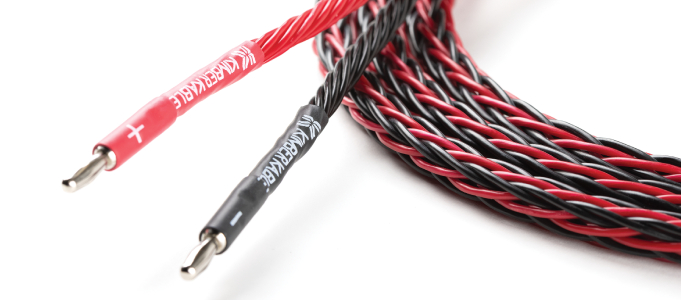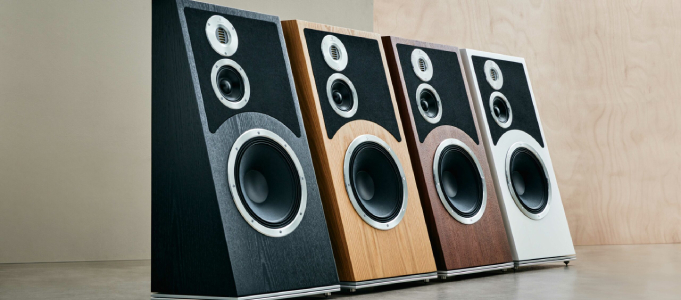Arcam AV41 AV Processor Review

Craig Joyce finds himself totally surrounded by this new premium-priced 16-channel AV processor…
Arcam
AV41 AV Processor
£4,999 RRP

Audio video processors form the heart of many a home cinema setup, multiplexing video and audio inputs into a single cohesive whole. They allow for seamless integration of not only television, but streaming services, Blu-ray or DVD and any audio source you can think of pointing at it. With the advent of Dolby Atmos and streaming services like Tidal and Apple Music offering Spatial Audio, many a hi-fi buff has embraced such processors as a way into multi-channel audio and immersive sound.
A part of the vast Harman International technology portfolio, Arcam offers AV processors that provide an enticing entry point into immersive sound while doubling as a capable video source processor. At a street price of $8,995, the AV41 is the company's top-of-the-line AV processor, sans any form of onboard amplification and with the latest HDMI 2.1 board to support video resolutions up to 10k over a 48 Gbps capable HDMI interface. With a strong list of features – including the well-regarded Dirac Live (with the optional Bass Control module) room correction technology – I was excited to see what my dual-subwoofer stereo setup could achieve…
UP CLOSE
The current generation of Arcam HDA series of processors is built around a common architecture created in the AVx0 range, which is claimed to be engineered with upgradeability in mind. The new AVx1 series includes the AVR11 Class AB AV receiver, the AVR21 high-power Class AB AV receiver and the AV41 AV processor. With 16 channels of Dolby Atmos decoding, leveraging 7 HDMI inputs, and 3 HDMI outputs with eARC compatibility, the AV41 supports pretty much any configuration you can throw at it.
All HDMI inputs support 8k video at 60 frames per second and 4k video at 120 frames per second and are fully HDMI 2.1 and HDCP 2.3 compliant. The AV41 uses dual ESS 9026PRO audiophile DACs with ESS reference voltage regulators, and the processor supports native streaming integrations with Roon, Spotify Connect, Google Chromecast and Apple Airplay, all over wi-fi or Ethernet.
In a somewhat austere grey chassis, the AV41's industrial design is clean and uncluttered. Some unusual decisions have been made with respect to the location of the power switch on the right of the unit and the volume dial on the left. Additionally, a choice to use seemingly translucent labels on the various front panel buttons makes navigation and operation of the unit more challenging in daylight. However, given the internet-connected nature of devices these days, I found most of my configuration time spent in a highly intuitive web browser interface, rarely even touching the provided remote control. It was a fairly trivial task to embed the AV41 into my Logitech Harmony remote control setup, and Arcam claim support is available in the major control platforms in Australia (e.g. Crestron, C4, Elan, URC, RTI, Savant).

The back panel of devices like these is the business end, and it was nice to see a well-laid-out configuration, noticeably absent of any legacy video connectivity and with ample XLR preamp outputs for downstream power amplification use.
The AV41 supports up to 4 unique subwoofer outputs, paired in Front and Rear subwoofer classifications (outputs 13-16) as well as the standard Atmos configurations, including Height speakers. A second zone is included for AV reticulation to another room, and the device supports not only Bluetooth connectivity but also contains a DAB/DAB+ receiver on board for digital terrestrial radio.
Of particular interest to this reviewer is the optional inclusion of the latest technology from Dirac, Dirac Live Bass Control. In my home system, I run a DSP setup with convolution filters applied via the Roon DSP engine. These filters were generated using the software product Audiolense and allow for time alignment of my various speakers and apply a target curve to my speaker's in-room response. This implementation had yielded a fantastic sounding system, with superb low-frequency transient response and a genuinely pleasant sound across diverse listening materials, although, to date, I had yet to treat my subwoofers independently of my main speakers.
Dirac maintains that Bass Control allows for the discrete optimisation of subwoofers using all-pass filters alongside a software-based machine-learning engine that calculates the optimal gains, delays and filters for each subwoofer uniquely. This approach is aimed at improving the sub-bass response, carefully adjusting crossovers with the main speakers and providing an optimised in-room performance that reduces the adverse impacts of room modes; a seemingly unavoidable issue no matter the shape of your room. Dirac Live Bass Control comes in two flavours, allowing for either a single subwoofer or multiple independent subwoofer controls. This license is available as an upgrade in the AV41 via Dirac's website and is activated almost immediately upon payment.
Pairing the AV41 up with a Classé CA5300 multi-channel power amplifier, my surround speakers (Paradigm Signature C5 centre and in-ceiling Paradigm E80-A CI surrounds), a pair of McIntosh MC1201 monoblocks and my trusty JBL K2 S9900 loudspeakers proved a cinch. Arcam's local distributor helpfully upgraded the AV41 so I could take advantage of the Dirac Live Bass Control module, and I teamed this functionality up with my Paradigm Signature Sub1 and REL 212/SX subwoofers. Qobuz over Roon provided my high-resolution audio source material, and Apple Music over the latest generation Apple TV serviced my Spatial Audio needs.

Dirac Live's configuration occurs remotely to the processor on a laptop, in my case, a Macbook Pro, with a calibrated microphone (MiniDSP Umik-1) used to collect impulse measurements. I connected both of my subwoofers to the Front Subwoofer outputs (outputs 13 and 14) and followed the bouncing ball within Dirac to record a range of measurement positions before it suggested an optimal configuration of crossovers, target curves and correction for four separate speaker channels (bass channels, front channels, centre channel and surround channels).
Having experience playing with room curves in Audiolense, I sensibly imported the Harman Target curves for Dirac Live, and from here, it was trivial to export the filters designed to one of the three slots on the AV41 so the listening could commence. My initial thoughts upon hearing the default Dirac-generated filters were that the sound was a little on the anaemic side, light on punch and bass. The uploaded Harman +6dB low-frequency boost curve was closer to my preference and was the filter that I spent the majority of my audition period with.
THE LISTENING
Playing a wide variety of music demonstrated the Arcam AV41's unblemished audio processing capabilities, and the addition of Dirac Live Bass Control really put it over the top for me. I'm used to a highly dynamic sound in my system, but with the AV41 in play, I was now playing with super-tight bass with lots of grip. There was virtually no sub-bass flab, and I immediately noticed a dramatic reduction in the resonances I have learnt to live with in my room. While the midrange was pleasing to listen to (vocal-driven content especially), it was the top-end response that I found revelatory.
My JBL K2s are compression driver speakers and can often sound bright with their constant directivity providing a flat in-room response rather than the tilted down in-room response that we, as humans, intuitively prefer. There was no brightness or etchiness on display here, just a nuanced and agreeable sound that I found utterly beguiling. Frequently room correction sucks the life out of music, but that wasn't the case here. My highly dynamic sounding system remained, with Dirac helping me drag the last ten percent out of my components. Lastly, the happiness I received from listening to immersive sounds via Apple's Spatial Audio was totally unexpected. Something that I had once put down as a gimmick after my subpar experiences with DVD-Audio now really delivered.
Reproducing polished vocals can often be a breaking point in my listening experiences. Fink'sYesterday Was Hard On All Of Us gave up an ethereal quality, being both deeply emotive and affecting. The use of reverb and overdubbing of vocals was tasteful, and the AV41 left no sense of things being overdone or sickly sweet. The close-mic'd acoustic guitars that open the track sound superlative, and the shimmering guitars and bass that underpin the later sections of this song are extremely well-balanced and carefully positioned in the stereo field of listening.

The sparse sound field of Fever Ray's Keep The Streets Empty For Me was fastidiously rendered in widescreen detail. Pinpoint imaging accuracy and a lovely, restrained ambience brought this song to the fore, as I've never heard before. No particular components of the audio spectrum seemed out of place, the sub-bass unable to be placed anywhere specifically within the room, perfectly integrated with my main speakers. Likewise, Sys700 from Younger Brother offered a truly vast sound field, but here the mid/bass was left free to run independently of the sub bass, maximising the value of the investments I have made in my 15” woofer mains and my subwoofers to deliver a punchy and focused outcome.
As most listeners will know, synthetically produced sub bass has the ability to separate the men from the boys when it comes to articulating deep bass tones. Ben Frost's Killshot is a challenging track that runs high volume, continual sub-bass sweeps across the stereo field like a manic animal. This menacing listening experience is a defiant cradle of sound, happy to show up any weaknesses in your sub bass and your subwoofer integration. Listening on the AV41 with Dirac Live Bass Control, I could have the room shaking with serious sub-bass seeming to circle me, tight as a drum. The only time I've experienced this track sounding better was live, and even then, I'm not so sure now!
But it was not just synthetic bass that profited from the use of Dirac Live Bass Control. Strings and deep vocals like those offered by Blixa Bargeld on his remix of Danny Elfman's In Time proved a masterclass in not only production but mastering too. The cello and bass here really drew me in, a simple refrain that proved a blissful earworm that ably demonstrated the magic being done in the lower registers. Blixa's baritone, paired with some stellar orchestral works, piqued my ear to this randomly selected track, and I've had it on constant rotation ever since.
Having previously found surround audio a ho-hum experience, it was wonderful to finally experience Apple's Spatial Audio and to have the penny drop about what this can do to properly mixed Dolby Atmos material. Paul McCartney's Deep Deep Feeling, with its ultra-low kick drums paired with his singular, sample-heavy approach to song construction, led the mix to some excellent rotational effects and unexpected backup vocals appearing behind and around the listener. The result remarkably improves upon the original; if only Apple TV could be used to play this kind of material without frustratingly forcing you to watch the lyrics on your TV at the same time!
St Vincent's Pay Your Way In Pain was positively infectious. Backing vocals bounce between the far left and right channels, synth stabs bobble across the full stereo stage and the dynamic shifts in the content reveal a lot more going on than the traditional stereo presentation offers. The overall balance of music in Spatial Audio never seems fragmented like my previous forays into DVD-Audio were, Atmos is seemingly a much more adept system for rendering music in surround.

THE VERDICT
 To many stereo purists, the thought of picking up an audio/video processor and using it primarily for two-channel listening would be considered heresy. This view is possibly myopic as the listening performed with the Arcam AV41 when properly dialled into my system revealed a high-quality sounding product with exemplary cross-frequency spectrum performance. If you have invested in or are considering using subwoofers in your system, it and the Dirac Live licensing on offer here have significant advantages over other software-centric DSP approaches that provide time alignment and room correction capabilities. This platform gives you precise bass control and a tonal palette that's incredibly appealing in overall presentation – all while being endlessly customisable to your listening preferences. The learning curve for Dirac is quite gentle, and well within the realm of any halfway serious audiophile.
To many stereo purists, the thought of picking up an audio/video processor and using it primarily for two-channel listening would be considered heresy. This view is possibly myopic as the listening performed with the Arcam AV41 when properly dialled into my system revealed a high-quality sounding product with exemplary cross-frequency spectrum performance. If you have invested in or are considering using subwoofers in your system, it and the Dirac Live licensing on offer here have significant advantages over other software-centric DSP approaches that provide time alignment and room correction capabilities. This platform gives you precise bass control and a tonal palette that's incredibly appealing in overall presentation – all while being endlessly customisable to your listening preferences. The learning curve for Dirac is quite gentle, and well within the realm of any halfway serious audiophile.
The immersive sound craze is becoming more popular by the day, and the ability to vacillate between stereo listening and surround listening without running a complicated home theatre bypass configuration is distinctly appealing. Well-mixed Atmos material is everywhere now and will seemingly be a commonly produced alternative format to stereo going forwards. While my Apple TV-centred Spatial Audio playback interface seemed clunky, this will likely improve over time.
After experiencing superlative results using this Arcam hardware platform and the accompanying Dirac Live software, I am a convert. The AV41 provides near-limitless connectivity options for the latest streaming services and will capably serve as the control room of any system. Its audible performance is impressive, a far cry from my past experiences with previous-generation home cinema processors. After spending hours attempting to get this kind of quality listening result from endless measurements and creating dozens of DSP filters using alternative filter creation approaches, this machine delivered a brilliant outcome in a matter of hours.
I am now seriously staring down the barrel of retiring my fantastic two-channel preamp and ageing multi-channel AV processor and heading in this consolidated direction. So if you are considering a new digital front end or want to optimise your system's in-room performance with the latest DSP technologies, this is a seriously interesting place to start your search.
For more information visit Arcam
Craig Joyce
With an engineering degree in digital signal processing and a storied career in IT networking and cyber security, Craig loves to push the boundaries of audio technologies. An aficionado of live music with personal detours in music production and event promotion, Craig is a long time enthusiast of post punk, electronic and experimental music.
Posted in:Home Theatre Amplifiers AV Receivers & Processors Applause Awards 2023
Tags: arcam
JOIN IN THE DISCUSSION
Want to share your opinion or get advice from other enthusiasts? Then head into the Message Forums where thousands of other enthusiasts are communicating on a daily basis.
CLICK HERE FOR FREE MEMBERSHIP






